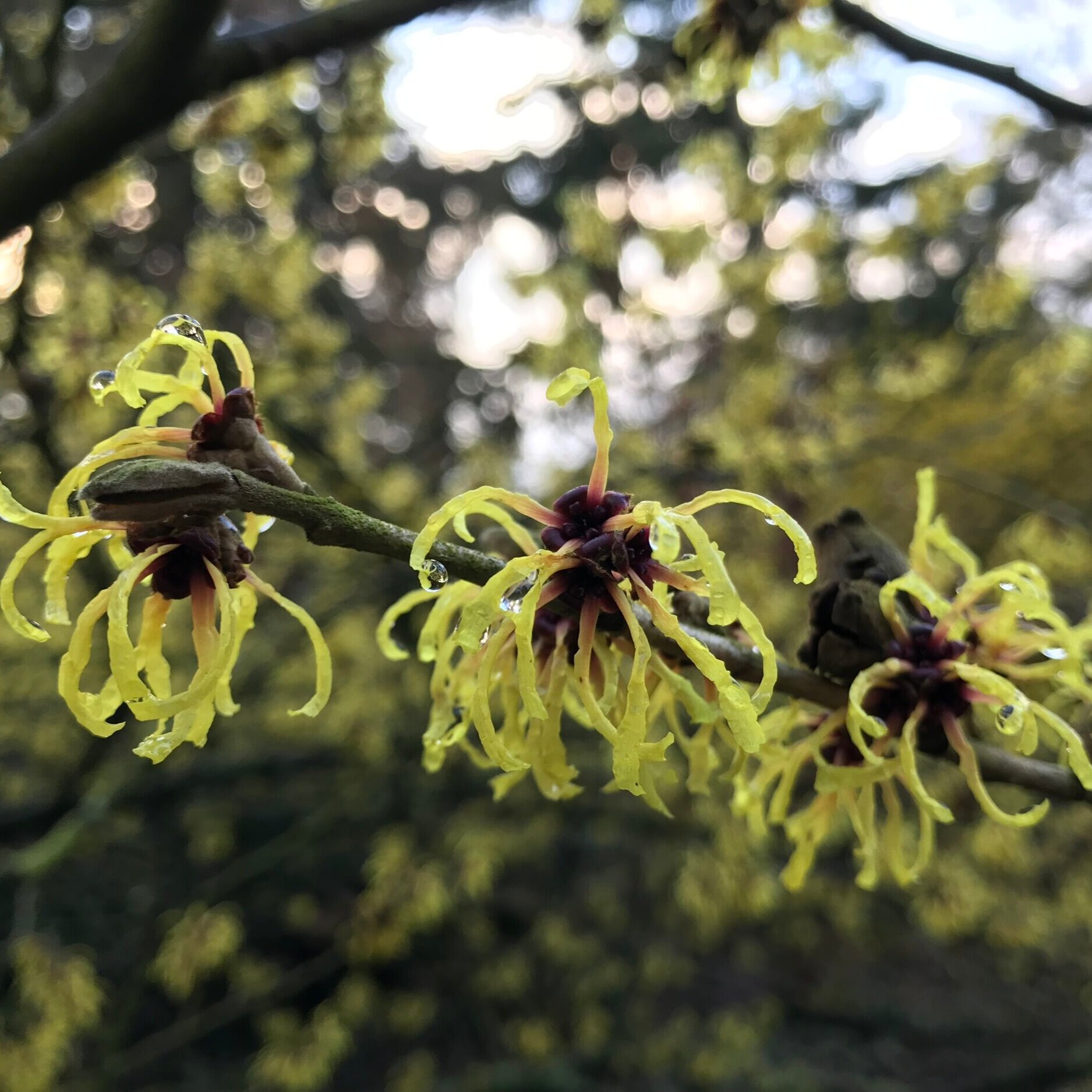Witch Hazels
A profile of these winter-flowering shrubs with photographs taken at Kalmthout Arboretum
Jelena
Rochester
Primavera
Orange Peel
Witch hazels are curious creatures, but there is no doubt that their delicate, spice-perfumed flowers bring added value to the winter garden. In shades of copper, citrus and rusty red, the spidery blooms adorn bare branches from Christmas through to early March, bringing daubs of soft colour to the garden. Close-up, the clusters of flowers are weirdly fascinating, unfurling from tight buds to reveal twisted, elongated petals – and then rolling themselves up again on cold, dark days to protect themselves from the frost. Each plant has its own subtle scent, often appropriate to its colour it seems, with darker-flowered forms offering dusky, spicy notes and pale, yellowy forms smelling more citrusy.
Most of the witch hazels we grow in the UK are forms of Hamamelis x intermedia, hybrids between the Chinese H. mollis and the Japanese H. japonica, and this is the form that is most suited to growing in our climate. They grow best in deep, moisture-rich soil, erring on the acidic, so they won't much like a light, chalky situation - but by the same token they don't like to be waterlogged in winter, so if your soil is heavy, ensure that you improve the soil by adding compost or grit before planting. They also need plenty of space to spread out, so it's best to plant them as single specimens in lawn or rough grass rather than integrating them into a mixed border, where they would feel crowded out. Some people say that they prune witch hazels, but I think it's better to embrace their sometimes gawky shape and only prune very lightly when you need to take out dead or damaged branches. If you plant in grass, you can underplant them with early flowering bulbs - snowdrops, winter aconites, or February-flowering Scilla mischtschenkoana.
These photographs were taken at Kalmthout Arboretum in Belgium, where there is a huge collection of Hamamelis collected over many years. Some of the specimens are like small trees - an amazing site when in flower. It's worth a trip on Eurostar to see the Arboretum in February when the collection is in flower. To read the full article I wrote on Kalmthout Arboretum for House & Garden, click here.



